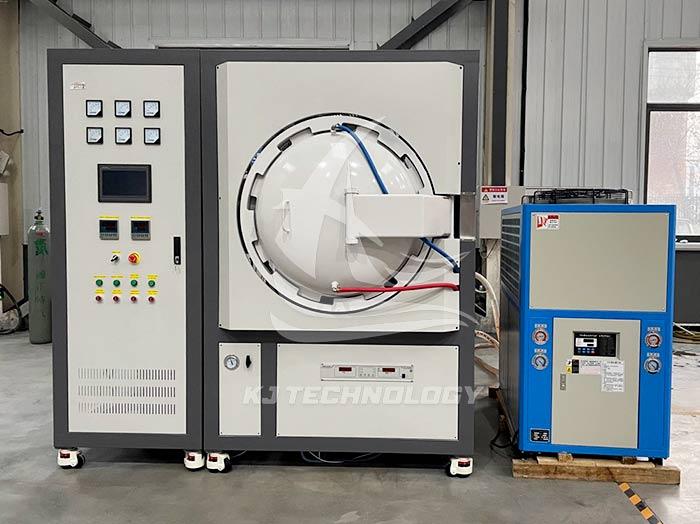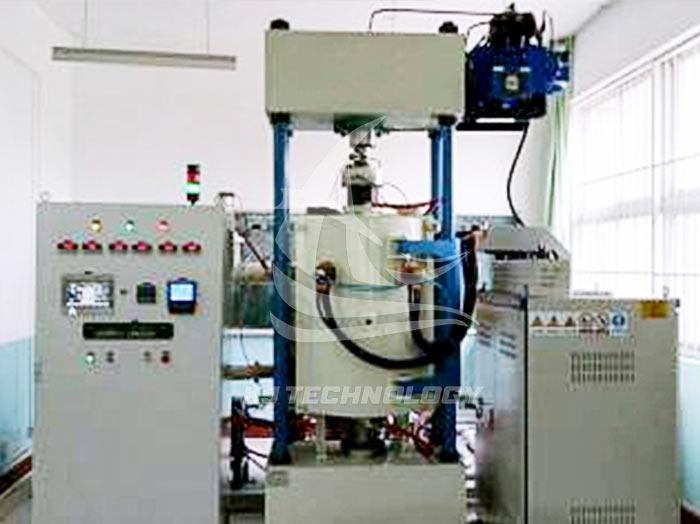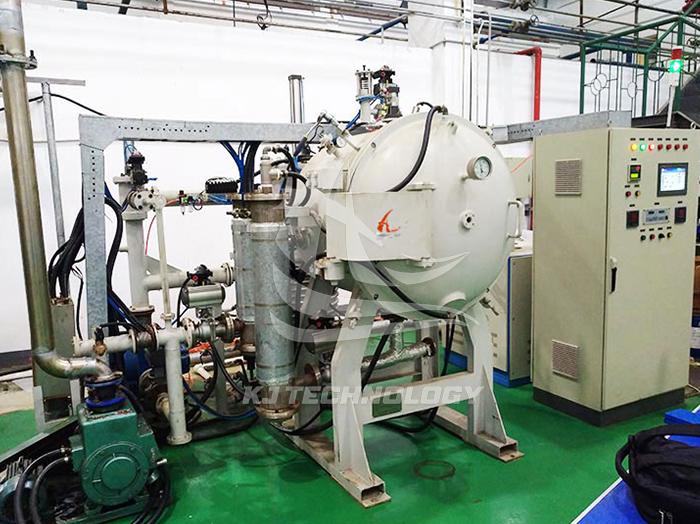Troubleshooting of Gas Vacuum Furnace
 07-29-2025 Author: KJ technology
07-29-2025 Author: KJ technology
Troubleshooting of gas vacuum furnaces requires multidimensional analysis including mechanical, electrical, and vacuum systems. The following are common faults and corresponding troubleshooting and solutions:
1. Vacuum system malfunction
Insufficient vacuum degree or prolonged pumping time
Possible reasons: Vacuum pump oil contamination, insufficient or too thin; Poor or damaged operation of vacuum pump; Aging, corrosion or damage of seals; Loose pipeline connections; Electromagnetic valve, pipe joint, vacuum pump suction valve, and sealing gasket around the working chamber are leaking air; The exhaust filter is clogged.
Solution: Clean the vacuum pump and replace it with new vacuum pump oil; Check and replace aging or broken seals; Ensure good sealing; Check the pipeline connections, solenoid valves, pipe joints, etc., and repair or replace them; Clean or replace the exhaust filter.
Vacuum pump fuel injection or oil leakage
Possible cause: The O-ring of the suction valve has come off; The return valve is blocked.
Solution: Remove the vacuum tube from the pump nozzle, remove the suction nozzle, take out the compression spring and suction valve, gently stretch the O-ring several times, re insert it into the groove, and then install it again; Remove the return valve and clean it.
Abnormal vacuum gauge reading
Possible reasons: Vacuum gauge malfunction or calibration deviation.
Solution: Compare the standard pressure gauge and recalibrate or replace the faulty sensor.
2. Heating system malfunction
Insufficient heating or abnormal temperature
Possible reasons: aging, damage or poor contact of heating elements; Damaged or improperly set temperature controller; The thermocouple wire is broken or short circuited; Unstable power supply voltage or oxidation of contactor contacts.
Solution: Check the connection and resistance of the heating element, repair or replace damaged heating elements; Check and adjust the settings of the thermostat, replace or reconnect the thermocouple; Test the balance of three-phase voltage, clean the contactor contacts or replace damaged components.
Heating does not stop
Possible cause: Poor contact or burnout of the heating time relay.
Solution: Adjust the contact between the time relay and the socket or replace it.
3. Mechanical structural failure
Poor closure of furnace door
Possible reasons: Poor sealing due to hinge deformation, lock failure, or furnace body deformation.
Solution: Correct the hinge position, replace the deformed lock buckle, and repair the deformed part of the furnace body.
Transmission components stuck
Possible reasons: lack of oil in fan bearings, loose motor screws, or foreign object intrusion.
Solution: Disassemble the fan to clean foreign objects and replenish lubricating oil; Check and tighten the fixing bolts of the motor.
4. Electrical system malfunction
Solid state relay malfunction
Possible cause: Heating circuit disconnection due to breakdown or aging.
Solution: Use a multimeter to check the conductivity of the solid-state relay and replace the damaged parts.
Program logic error
Possible cause: PLC or industrial computer program abnormality, resulting in command confusion.
Solution: Restart the control system, check the code logic, and restore the factory settings.
Sensor interference
Possible reasons: Poor electromagnetic shielding and external interference on thermocouple signals.
Solution: Use shielded cables, keep away from strong electrical lines, and ground them.
5. Other faults
The quenched surface is not shiny
Possible reasons: Insufficient vacuum degree or incomplete degassing of quenching oil.
Solution: Extend the pumping time and check for leaks; Improve the degassing effect of quenching oil.
Carbon addition to parts
Possible reason: Poor furnace cleanliness, residue volatilization and adhesion to workpieces.
Solution: Use acetone or trichloroethylene to clean the furnace and regularly clean the residue.
Alloy element volatilization
Possible reason: Excessive vacuum caused metal vapor deposition.
Solution: Control the pressure according to the material characteristics (such as low vacuum for stainless steel and high vacuum for titanium alloy).








